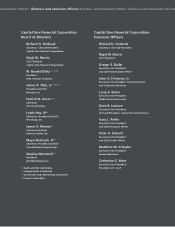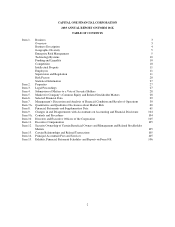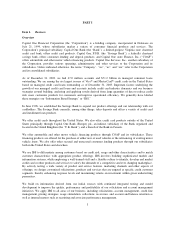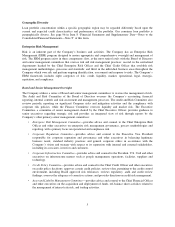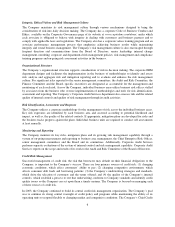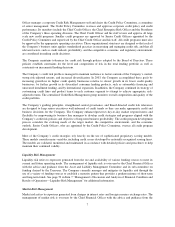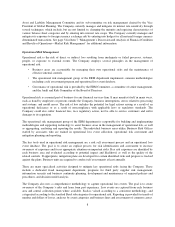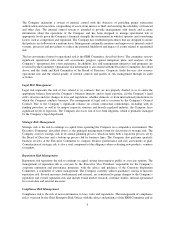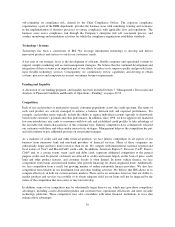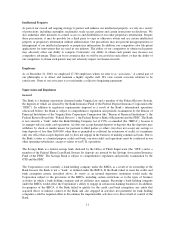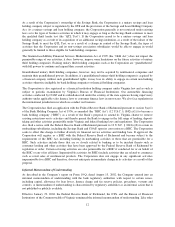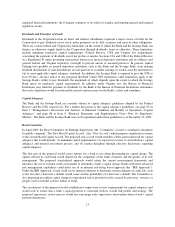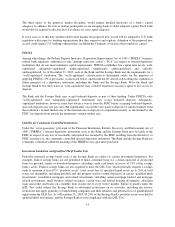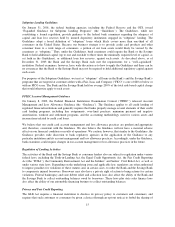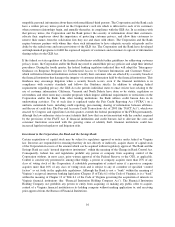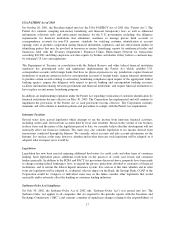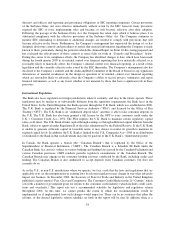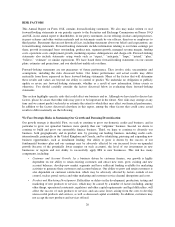Capital One 2003 Annual Report Download - page 28
Download and view the complete annual report
Please find page 28 of the 2003 Capital One annual report below. You can navigate through the pages in the report by either clicking on the pages listed below, or by using the keyword search tool below to find specific information within the annual report.sub-committee on compliance risk, chaired by the Chief Compliance Officer. The corporate compliance
organization, a part of the ERM department, provides the business areas with consulting, training and assistance
in the implementation of business processes to ensure compliance with applicable laws and regulations. The
business areas assess compliance risk through the Company’s enterprise risk self assessment process, and
conduct monitoring and remediation activities for which the compliance organization establishes standards.
Technology / Systems
Technology has been a cornerstone of IBS. We leverage information technology to develop and deliver
innovative products and services to satisfy our customers’ needs.
A key part of our strategic focus is the development of efficient, flexible computer and operational systems to
support complex marketing and account management strategies. We believe that the continued development and
integration of these systems is an important part of our efforts to reduce costs, improve quality and provide faster,
more flexible technology services. Consequently, we continuously review capabilities and develop or obtain
systems, processes and competencies to meet our unique business requirements.
Funding and Liquidity
A discussion of our funding programs and liquidity has been included in Item 7 “Management’s Discussion and
Analysis of Financial Condition and Results of Operations—Funding” on pages 49-53.
Competition
Each of our card products is marketed to specific consumer populations across the credit spectrum. The terms of
each card product are actively managed to achieve a balance between risk and expected performance. For
example, card product terms typically include the ability to reprice individual accounts upwards or downwards
based on the customer’s payment and other performance. In addition, since 1998, we have aggressively marketed
low non-introductory rate cards to consumers with low-risk and established credit profiles to take advantage of
the favorable risk return characteristics of this consumer type. Industry competitors have continuously solicited
our customers with these and other similar interest rate strategies. Management believes the competition has put,
and will continue to put, additional pressure on our pricing strategies.
As a marketer of credit card and other financial products, we face intense competition in all aspects of our
business from numerous bank and non-bank providers of financial services. Many of these companies are
substantially larger and have more resources than we do. We compete with international, national, regional and
local issuers of Visa®and MasterCard®credit cards. In addition, American Express®, Discover Card®, Diner’s
Club®and, to a certain extent, smart cards and debit cards, represent additional competition to the general
purpose credit card. In general, customers are attracted to credit card issuers largely on the basis of price, credit
limit and other product features, and customer loyalty is often limited. In motor vehicle finance, we face
competition from banks and non-bank lenders who provide financing for dealer-originated loans. Additionally,
we face competition from a small, but growing number of online automobile finance providers. We also face
competition from lenders in our installment loan and other lending activities. We believe that IBS allows us to
compete effectively in both our current and new markets. There can be no assurance, however, that our ability to
market products and services successfully or to obtain adequate yield on our loans will not be impacted by the
nature of the competition that now exists or may later develop.
In addition, some of our competitors may be substantially larger than we are, which may give those competitors
advantages, including a more diversified product and customer base, operational efficiencies and more versatile
technology platforms. These competitors may also consolidate with other financial institutions in ways that
enhance these advantages.
10


